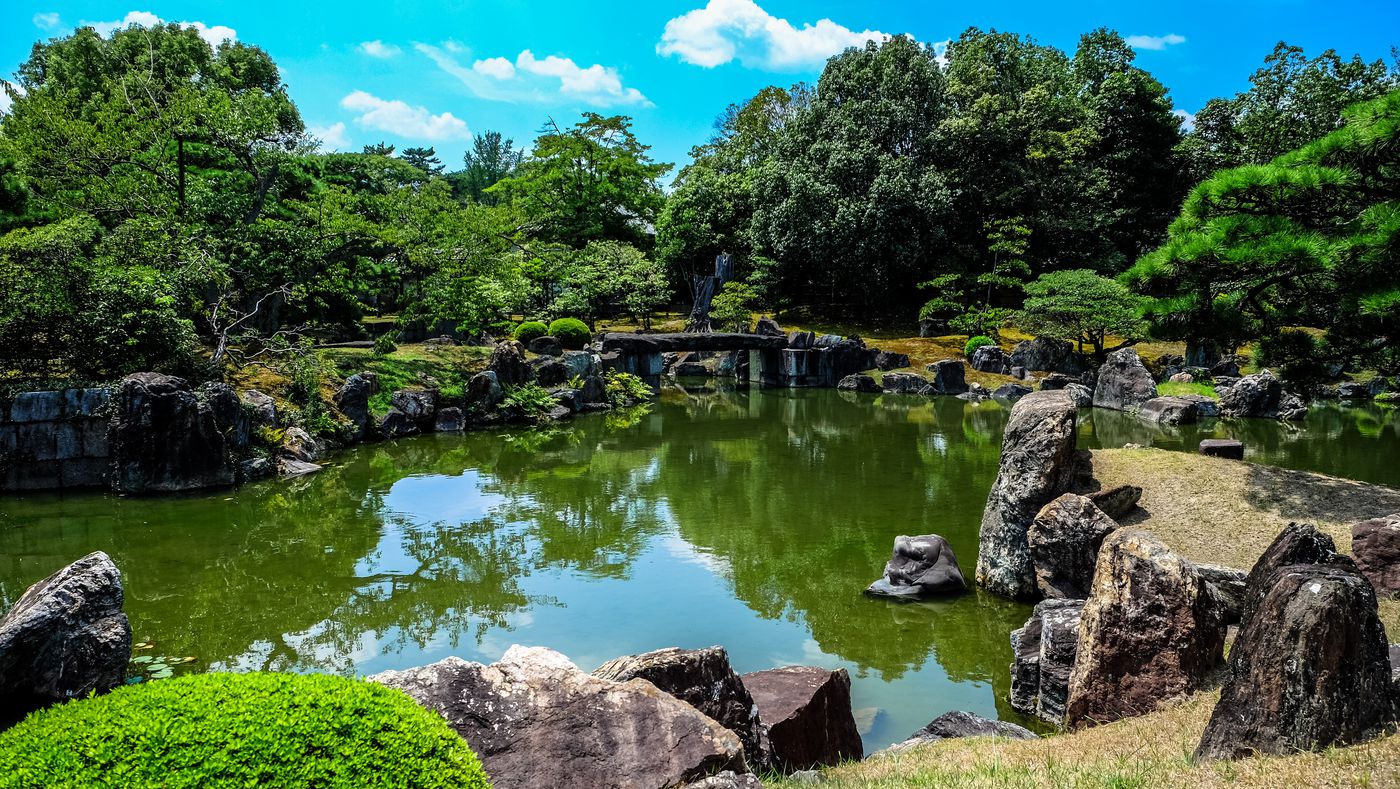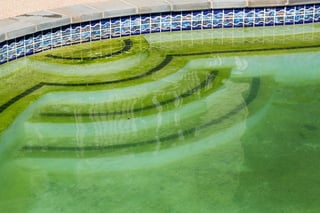
How to Identify, Treat, and Remove Algae in Your Swimming Pool
 During the months of July and August, algae can be a very big problem for swimming pool owners. With the higher temperatures during these months, as well as inconsistency in a pool's sanitizer levels, algae can rear its ugly head.
During the months of July and August, algae can be a very big problem for swimming pool owners. With the higher temperatures during these months, as well as inconsistency in a pool's sanitizer levels, algae can rear its ugly head.
Algae is a single-celled plant form. It uses the process of photosynthesis to manufacture its own food. It comes in a very wide variety of colors and forms, making it adaptable to almost any condition.
Due to algae's microscopic size, it takes literally millions of these plants to accumulate to be noticed by the naked eye! By that time it may be too late and very costly to correct.
Here's our advice: The best way to eliminate algae is through prevention! (This is also why we are such proponents of proper water chemistry and water balance).
This article will discuss what algae looks like in a pool, and how to deal with it.
IMPORTANT: We will be referring to chemical products and processes throughout this article, but it is imperative that you know, understand, and adhere to the chemistry guidance provided by the manufacturer or maker of your inground pool. This should include guidance for water balance, chemistry ranges, and recommended product types.

What are the types of pool algae, and how do you remove them?
- Green algae in the pool can cling to the wall or float in the water. Get rid of it by brushing the pool, shocking*, and adding Algaecide 60.
- Black algae looks like black spots and feels slimy. Get rid of it by aggressively brushing the algae and adding Algaecide 60.
- Mustard algae looks like sand in the bottom of the pool. Get rid of it by aggressively brushing the algae and adding Algaecide 60.
- If the pool is full of algae, add a flocculant (floc) to the water and vacuum up the coagulated algae that settles on the bottom of the pool.
Green Algae
The most common form of algae in swimming pools is "green" algae.
Green algae varies in color from blue-green to yellow-green to dark-green. It can be free floating in the water (turning the water a hazy green) or can cling to the wall (patches of green).
Green algae can be prevented easily with adequate circulation, regular brushing, maintaining proper chemical levels and a clean filter.
Treatment
Properly analyze the pool water to ensure the pH is at the proper level. Balance the water chemistry if needed.
Pools treated with chlorine should be brushed thoroughly, then shocked*, raising the chlorine levels typically to a level that is 10x the current combined-chlorine reading.
Also, add a dose of Algaecide 60 to the water. Continue to check the pool's filtration throughout this process to ensure proper pressure on your pool's filter.
You may have to repeat this process a few times in order to eradicate the algae 100 percent.
Black Algae
"Black Algae" is actually blue-green algae. It forms in cracks and crevices on pool surfaces, especially plaster finishes.
You'll normally find black algae growing in, but not limited to, shady areas of the pool. Black algae is more typically found in concrete or plaster-finished pools because of their rough surfaces.
It is known for a heavy slime layer and "skeletal growths" that make it impervious to normal chlorine levels.
Black algae usually doesn't change the water clarity. It just makes your pool appear to have black spots on the surface.
Treatment
Properly analyze and balance the water.
Prior to and during treatment, you MUST thoroughly brush the algae in order to "break open" the slime layer. This is a critical step. If you skip it, you'll prevent the treatment from working.
Shock* the pool and continue to brush the black algae. Add proper doses of Algaecide 60.
Mustard Algae
Mustard algae is a chlorine-resistant form of green algae (yellow-green to brown in color).
It often resembles dirt or sand on the bottom or sides of a pool.
Treatment
Same as black algae.
In certain cases, when there is algae in your pool, you have to vacuum the algae directly out of the pool.
You can do this by brushing the algae off the walls, then adding a 'floc' to the water. It coagulates the algae and causes it to settle. Once it settles, vacuum it directly 'to waste' and out of the pool.
When attempting to floc a pool, follow the directions on the bottle very carefully.
Hopefully you will not be burdened with algae in your swimming pool this year.
As we mentioned earlier, it is imperative that you know, understand, and adhere to the chemistry guidance provided by the manufacturer or maker of your inground pool. Knowing this information will help you safely maintain the integrity of your pool's finish while treating any algae situation you may be dealing with.
Many pool owners think that algae is a standard part of swimming pool ownership. This clearly does not have to be the case, as many River Pools owners have never even seen algae in their swimming pool.
Good luck and happy swimming!
*Always test your pool water and review the pool water balance, chemistry range, and product type recommendations provided by the manufacturer of your inground pool before adding any chemical products to the water. Follow all application and safety instructions on the label of any product used.
Up Next:
How to Get Rid of Algae in an Inground Swimming Pool
The Ultimate Guide to Inground Swimming Pool Maintenance
Editor's note: This article was originally written by Marcus Sheridan and was updated on March 11, 2025, with current information. River Pools is a brand of inground fiberglass pools produced in a manufacturing facility in Fortville, IN. While our expertise is in manufacturing fiberglass pools, we have access to a network of installers with expertise relating to project design, installation, and pool service. We often tap into this knowledge base and share information freely with homeowners, just like you, considering installing a swimming pool in your backyard.




